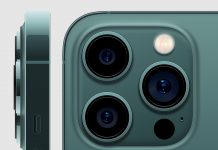How does Apple’s most affordable 2018 iPhone compare to the discounted iPhone 8 Plus of last year?

If you’re in the market for a big-screen iPhone but don’t want to pay upward of $1,000 for an iPhone XS or Max, the iPhone XR (which starts at $749, £749 and AU$1,229) is an excellent choice. It has key new features from Apple, including an advanced A12 Bionic processor, wireless charging and a camera that’s on par with the iPhone XS.
But last year’s iPhone 8 Plus, which is now discounted and starts $50 less than the XR at $699, £699 and AU$1,149, also remains a fantastic phone. Despite launching in 2017, the phone has many of the same advantages as the XR. It also sports a classic iPhone design, complete with a physical home button.
To figure out which phone is right for you, I break down the two phones‘ designs, cameras, hardware features and price to see what phone fits what needs the best.

Design: iPhone XR’s vibrant colors or iPhone 8 Plus’ classic home button?
Of the two phones, the iPhone XR has a bigger 6.1-inch display. Despite this however, the XR’s slimmer bezels mean that the physical footprint of the phone is actually smaller than the iPhone 8 Plus, and it’s lighter as well.

Sarah Tew/CNET
The iPhone XR also comes in six colors, including a vibrant red, blue, yellow and coral on top of the standard black and white. The iPhone 8 Plus, on the other hand, only comes in three color variants: white, black and gold.
But even if it lacks extra color options, the iPhone 8 Plus has a few design advantages. Its smaller 5.5-inch display is actually sharper than the iPhone XR: It has a higher resolution and more pixels-per-inch (for the exact specs, check out the spec chart below). And unlike the iPhone XR, there’s no notch on the iPhone 8 Plus, and it retains a classic home button, which doubles as a fingerprint scanner.
Whether or not the iPhone 8 Plus’ home button is considered an advantage is up to your personal preference, though. The button is familiar, and lets you easily tap to return home and double-tap to call up recent apps. Without the home key, the iPhone XR integrates swiping gestures for navigation instead. This may take some time to learn, but it’s easy to adapt to after a while.
Camera: FaceID or dual rear cameras?
The iPhone XR has a front-facing camera that can sense depth and map your face. Because of this, you can unlock your phone or authorize saved passwords with FaceID instead of a fingerprint and you can make animated emojis that mirror your facial movements.

Unlike other iPhone X-series phones, the XR doesn’t have a secondary telephoto rear lens as well. That means there’s no 2x optical zoom (it uses a digital zoom instead) and Portrait photos are rendered through software; not enhanced with the telephoto lens.
Though I expected the 8 Plus to take better photos given its dual-camera setup, photos taken with the XR looked sharper and more vibrant. That doesn’t mean the 8 Plus is a slouch, but I can noticeably see details in the XR that the 8 Plus managed to smudge out a bit.

Sarah Tew/CNET
And even though it renders its Portrait photos with a single lens, the effect looks just as good, if not better on the XR than it does on the 8 Plus. On the XR, the fallout between the fore- and background is smooth, skin tones are more realistic and the blur effect looks natural.
Zooming 2x on a scene with the XR also worked just as well as the 8 Plus’ telephoto zoom. Objects clear and small details, like the lines of tree bark or individual leaves that fell on the ground, had finer lines and focus.
Also note that while both phones have studio lighting effects for the rear camera(s), the 8 Plus doesn’t not have it for its front-facing camera.
Performance: The iPhone XR’s processor and battery are better
My day-to-day handling of both iPhones didn’t show any discernible differences in speed, and when it came to daily tasks like launching apps and firing up the camera, both phones appeared to perform as swiftly as the other.
But the iPhone XR is indeed faster on paper, thanks to its more advanced A12 processor (the iPhone 8 Plus has last year’s A11 chipset). Check out the benchmarks below:
3DMARK ICE STORM UNLIMITED
NOTE:
Longer bars indicate better performance
GEEKBENCH V.4.0 SINGLE-CORE
NOTE:
Longer bars indicate better performance
GEEKBENCH V.4.0 MULTI-CORE
NOTE:
Longer bars indicate better performance
Clocking an average of 19 hours and 53 minutes in our lab tests for continuous video playback on Airplane mode, the iPhone XR had the best battery life of this year’s iPhones. In comparison, the iPhone 8 Plus lasted 13 hours and 45 minutes. This discrepancy is likely due to a bump in battery capacity for the XR. Though Apple does not confirm these specs, the iPhone XR has a larger 2,942mAh battery compared to the iPhone 8 Plus’ 2,675mAh battery.
Other things to consider: Capacity, dual-SIM and 3D Touch
- Capacity: The iPhone 8 Plus comes in two memory capacities, 64GB and 256GB. Meanwhile, the iPhone XR has a third memory option of 128GB. This is commonly considered to be the “sweet spot” as far as storage goes. While 64GB may not be enough to hold all your photos and 4K videos, 256GB may be too extravagant. So it’s important to note that the iPhone XR has an option of something in between.
- Dual-sim capabilities: New to iPhones this year is dual-sim capabilities. That means you can manage two different phone numbers on the same iPhone XR, using a nano-SIM and e-SIM. For more information, check out CNET’s dual-SIM and eSIM FAQ here.
- 3D Touch: The iPhone 8 Plus’ screen is pressure-sensitive, and has a feature called 3D Touch. By tapping a tad harder with your finger, you can preview links, apps and messages before opening them. Aside from a few things that you can long-press (like the camera and flashlight shortcuts), the iPhone XR does not have this feature for the most part.

Angela Lang/CNET
Price: Is it worth it to buy the cheaper iPhone 8 Plus?
Taking all these different features into account, you’ll have to weigh for yourself whether or not the iPhone 8 Plus’ new cheaper price tag is worth going for. Apple knocked off $100, £100 and AU$80 from the launch price of the 8 Plus, which means that the phone is now $50, £50 and AU$80 cheaper than the iPhone XR.

Angela Lang/CNET
Is saving an extra $50 worth a shorter battery life, a less advanced processor and camera, and no dual-SIM capabilities? My short answer is no. Though you’ll be “gaining” a second 12-megapixel rear camera and a home button, I do believe the $50 is worth the XR’s advantages.
That may not be true to everyone though. And if having a home button makes the iPhone 8 Plus particularly appealing, remember that sticking to features like the home button and the fingerprint reader for the time being is delaying the inevitable. With other phones adopting screen notches, animated emoji and face unlock, the iPhone XR is a continuous iteration of Apple’s upcoming iPhones. Considering how fast the phone industry and its technologies move, not only will you get the latest hardware for $50 more, but the iPhone XR ensures that you’ll be more acclimated to future technology than with the iPhone 8 Plus.
IPHONE XR VS. IPHONE 8 PLUS SPECS
| iPhone XR | iPhone 8 Plus | |
|---|---|---|
| Display size, resolution | 6.1-inch LCD Retina Display; 1,792×828 pixels | 5.5-inch; 1,920×1,080 pixels |
| Pixel density | 326ppi | 401 ppi |
| Dimensions (Inches) | 5.9×3.0x0.33 in | 6.24×3.07×0.30 in |
| Dimensions (Millimeters) | 150.9×75.7×8.3 mm | 158.4×78.1×7.5 mm |
| Weight (Ounces, Grams) | 6.8oz; 194g | 7.13 oz; 202 g |
| Mobile software | iOS 12 | iOS 11 |
| Camera | Single 12-megapixel | Dual 12-megapixel |
| Front-facing camera | 7-megapixel with Face ID | 7-megapixel |
| Video capture | 4K | 4K |
| Processor | Apple A12 Bionic | Apple A11 Bionic |
| Storage | 64GB, 128GB, 256GB | 64GB, 256GB |
| RAM | Not disclosed | 3GB |
| Expandable storage | None | None |
| Battery | 2,942mAh (Apple doesn’t confirm this) | 2,675mAh (Apple doesn’t confirm this) |
| Fingerprint sensor | None (Face ID) | Home button (Touch ID) |
| Connector | Lightning | Lightning |
| Headphone jack | No | No |
| Special features | Water resistant (IP67); dual-SIM capabilities (nano-SIM and e-SIM); wireless charging; Face ID; Memoji | Water resistant (IP67); wireless charging |
| Price off-contract (USD) | $749 (64GB), $799 (128GB), $899 (256GB) | $699 (64GB), $849 (256GB) |
| Price (GBP) | £749 (64GB), £799 (128GB), £899 (256GB) | £699 (64GB), £849 (256GB) |
| Price (AUD) | AU$1,229 (64GB), AU$1,299 (128GB), AU$1,479 (256GB) | AU$1,149 (64GB), AU$1,399 (256GB) |










































